"In Feed" Ads
Ads that appear in your news feed on social networks (ie.your Facebook or Twitter feed)
When the walled gardens of search and social are not enough, native advertising helps drive traffic, engagement, and conversions on the open web. Find out what native advertising is all about and why most marketers worldwide use native to boost their bottom line.
Start Now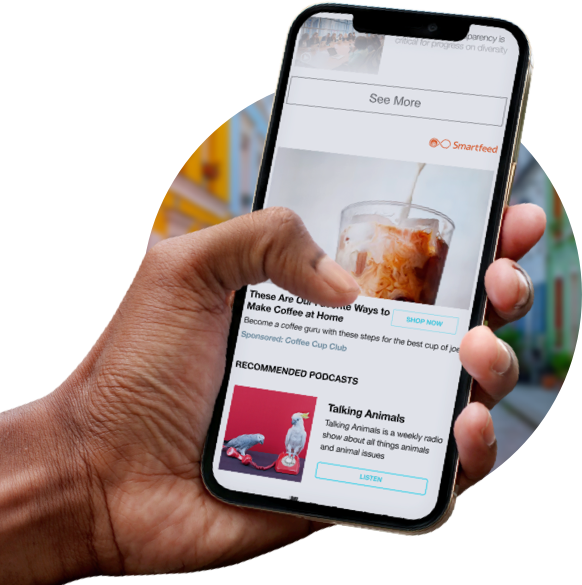
Native advertising is a form of paid advertising in which the ads match the look, feel and function of the media format where they appear. They fit “natively” and seamlessly on the web page.
Unlike banner or display ads, native ads don't really look like ads, so they don't disrupt the user's interaction with the page. This is the key to a native advertising definition – native ads expose the reader to promotional content without sticking out like a sore thumb.
Native ads often feature as recommended content on websites, appearing below or beside the article you just read. They also appear as “in feed” ads, as part of your news feed on social networks, such as Facebook or Twitter. Another form that native ads take is search and promoted listings that appear at the top of your Google search results, or in the sidebar.
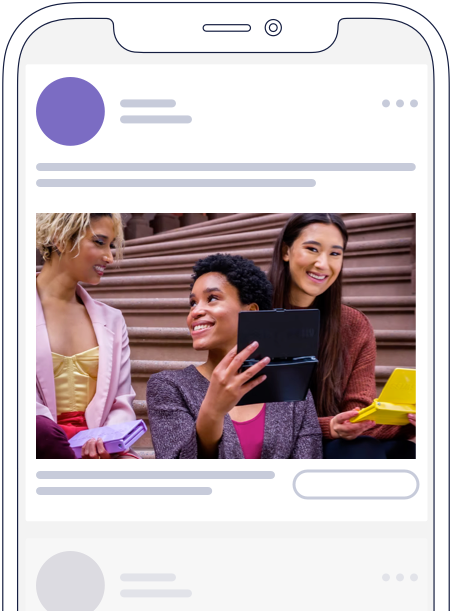
Ads that appear in your news feed on social networks (ie.your Facebook or Twitter feed)
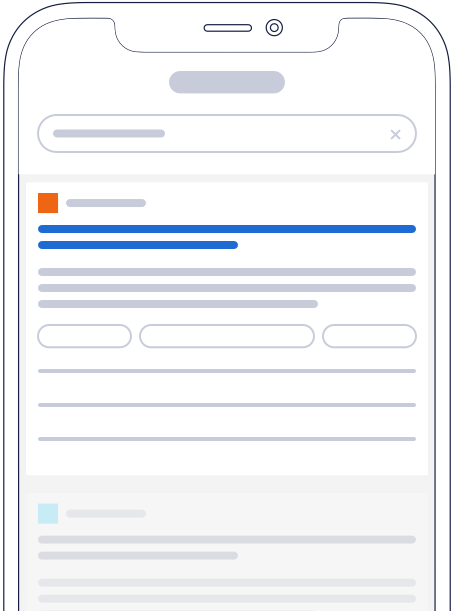
Ad listings that appear at the top of your Google search results, or in the side bar
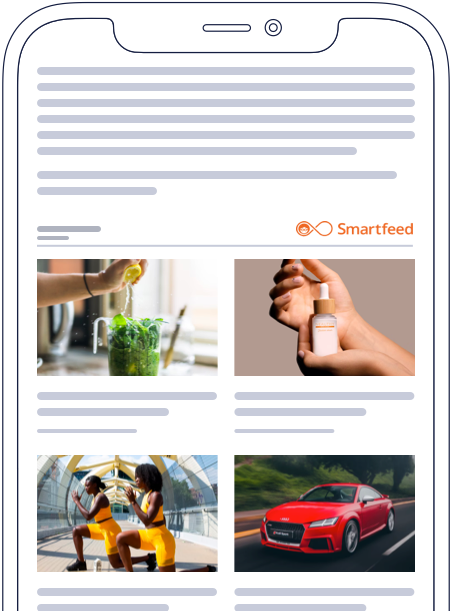
Recommended articles that appear below the article you just read.

Native ads don’t look like ads, so you might think they are hard to spot. Perhaps readers may not even realize they are consuming a paid advertisement, which could compromise the editorial neutrality of the publisher. Fear not, for consumer watchdogs, such as the FTC (Federal Trade Commission) and the IAB (Interactive Advertising Bureau), are at pains to regulate the use of native ads to ensure that consumers are not misled.
Although native ads integrate smoothly into the web page, you can usually see that it’s a native ad by a few telltale signs:
“By 2025, native advertising worldwide will reach a value of $400 billion.“
Still, the best way to really understand the power of native advertising is to see it in action.
“By 2025, native advertising worldwide will reach a value of $400 billion. The world’s biggest and smallest brands all use native advertising as part of their digital marketing toolbox. And why not, when US publishers say that native advertising is the second-best performing channel for video campaigns?“
Still, the best way to really understand the power of native advertising is to see it in action.
Take Michelin, for example. The global tire company saw great success with native ads, even outperforming their social media ads. Plus they lowered their Cost per Visitor to the website by 16%, all while boosting the quality of traffic, driving interested and engaged audiences.
Read more about Michelin's success with native advertising
Want to see the top native advertising examples? Click here
Native ads are built from a number of metadata elements, such as a headline, thumbnail image, content URL, description text, and more. While that may sound complicated, creating native ads is not difficult, provided you are clear about the target audience, message and goal of the native campaign.
The main elements marketers need to focus on when creating native ads is the headline, image, and the content the ad will link to. Here are some basic rules to get started:
As adtech becomes more sophisticated, there are many more native ad formats available to advertisers. It’s no longer just standard ads – today, native ad formats include carousel ads, outstream video ads, click-to-watch video ads, mobile app install ads, native social ads… the list goes on.
Advertisers have significant control over the type of native ad they wish to serve to target audiences, and can choose the style that best serves their message and potential customers. For example, for brands who want to tell a compelling story that drives conversions, a click-to-watch video ad with embedded CTA is an excellent choice. E-commerce stores can use native carousel ads to showcase a variety of products. And app publishers can use mobile app install ads, which are specifically designed to engage potential users with eye-catching mobile ads that drive app downloads.
To discover all the possibilities for native ad formats, visit the Smartads Gallery.
The ability to scale your native advertising while targeting the right consumers is possible with programmatic native advertising. Programmatic auctions of native ad inventory enables brands and businesses to optimize their ROAS (Return On Ad Spend) in real time, and when budgets are focused, this can make a big difference to your advertising success.
Programmatic native may sound complicated but actually it’s pretty simple, in principle. A user visits a website, creating space for an ad impression. The Supply Side Platform (SSP) sends bid requests on behalf of the publisher. The Demand Side Platform (DSP) responds with metadata metrics and bids on behalf of the advertiser. Based on the metadata, the SSP selects the winning bid and instantly configures the native ad via templating design to fit into the website or app. This entire process occurs within a fraction of a second.
Advertisers can choose the DSP they prefer to monitor ad performance and achieve their KPIs, including Outbrain’s own native DSP. Learn more about what is programmatic advertising and how it works here.
When the power of video and native advertising come together, it forms the foundation for a strong and effective full-funnel advertising solution.
Native video ads are served to readers as part of the flow of their online browsing experience. While reading an article or scrolling a web page, native video ads grab attention and interest by offering relevant, interesting content in a natural and non-intrusive way. Native video formats like click-to-watch require the user to opt in to watch the video, rather than disrupting their surfing with an annoying unwanted ad. This means that users are primed to discover the video content, and their frame of mind is open to hearing your ad message.
Let’s take a look at how native video can power up your funnel at every stage of the customer journey:
Why do advertisers love native advertising? Because it works. Here are some of the benefits of native advertising enjoyed by marketers across numerous verticals:

Consumers look at native ads 53% more than display ads. Native ads create an 18% increase in purchase intent, and the visual engagement with native ads is the same, and even slightly higher, than the original editorial content.
Ad fatigue is what happens when the audience gets bored with seeing ads. After a while, they simply stop paying attention. Native ads are brand exposure cloaked in editorial content, so they don’t tire out the audience. As long as the content is relevant and interesting, native advertising engages the audience.
Consumers know that native ads are a form of advertising, but they don’t care! In a Stanford University study, researchers found that native advertising fools nobody. Consumers are well aware that they are viewing a form of advertising, however native ads still have a significant effect on purchase behavior.
Native ads help brands and businesses engage their audiences with relevant, compelling content via high quality websites, targeted to users who are most likely to be interested. The finer details of a native campaign will depend on the goal, whether it be to get customers to buy a product, download an ebook, request a demo, or watch a video.
Here’s how native advertising works:

Produce original, high-quality content for your audience in your niche.

Host the content online, such as website, blog, or landing page.

Run a native advertising campaign, targeting high potential audiences.

Consumers browse the web and click on your native ad. This leads them to your content.

Consumers read your content. They become interested and may even become customers.
Behind the scenes, there is an advanced native adtech platform or network that partners with websites all over the world, providing space on their editorial pages for marketers to show native ads to consumers online.
Remember, at its core, native advertising works on a very simple principle: people engage with and click on content that interests them.
Want to learn more about how native content works and how to engage your audience?

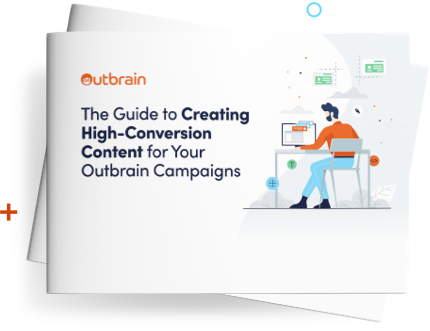
Native advertising is an affordable way for brands and businesses to get seen on some of the world’s leading publisher sites, such as CNN, The Washington Post, Der Spiegel, Le Monde, and many more.